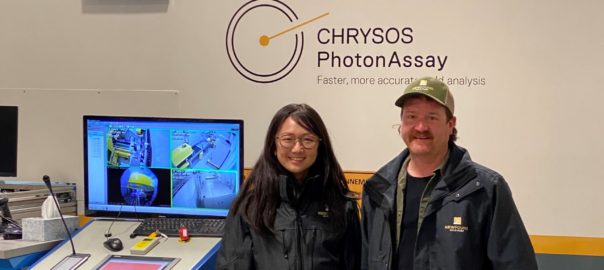New Found Gold and its consultants, following detailed test work and a quality control program, have highlighted the Chrysos PhotonAssay™ method as an appropriate technique for determining gold content in samples from its Queensway project, in Newfoundland and Labrador, Canada.
The company announced this alongside assay results from 14 diamond drill holes completed as part of a program designed to test the Keats Main Zone located along the Appleton Fault Zone (AFZ) at Queensway.
Over the past several months, the company tested hundreds of samples in the low-, mid-, and high-grade range, comparing the results of the photon assay method with traditional fire assay, and found a very strong correspondence of the results, it said.
Moving forward, the company will use the photon assay method at MSALABS’ Val-d’Or facility, as well as ALS Minerals’ Vancouver laboratory for traditional fire assay and screen fire determination, to ensure the most efficient turnaround times on assays. The ongoing quality control (QC) program will include analysis of some samples by both methods to monitor accuracy, the company said.
PhotonAssay, Chrysos says, delivers faster, safer and more accurate analysis of gold, silver and complementary elements by non-destructive measurement of larger and more representative samples in as little as two minutes, enabling rapid turnaround of critical operational information that drives optimisation throughout the mining value chain.
The system, originally developed at Australia’s national science agency, CSIRO, provides an environmentally friendly, chemical-free, more sustainable replacement for traditional fire assay methods, significantly reducing CO2 emissions and hazardous waste.
Melissa Render, VP Exploration for New Found, said: “We are…excited to debut the use of the Chrysos PhotonAssay method following several months of testwork, clearing the way for New Found to begin shipping a steady flow of material to MSALABS for assaying. The PhotonAssay method is efficient, non-destructive, cost effective and environmentally friendly. These are important attributes that we strive to incorporate into all aspects of exploration at New Found Gold and we are excited to partner with Chrysos and MSALABS to apply this technology at Queensway.”
Lynda Bloom, a sampling and assay expert that has assisted New Found with its QC programs and who has evaluated photon assay data for several other projects, said: “Prior to releasing PhotonAssay results, New Found conducted a thorough evaluation of the method by doing extensive testing against fire assay determinations. Even though over 3 million photon assays have been reported worldwide to date, it was important to prove to management that the method does not bias gold results with respect to fire assay for Queensway samples.”








